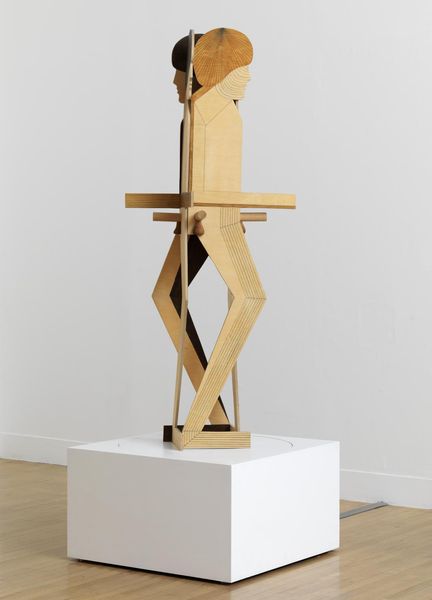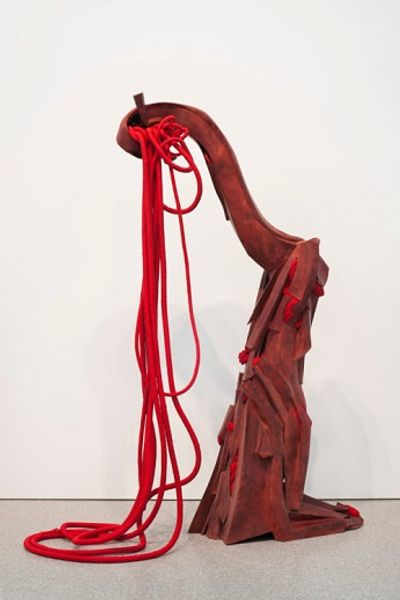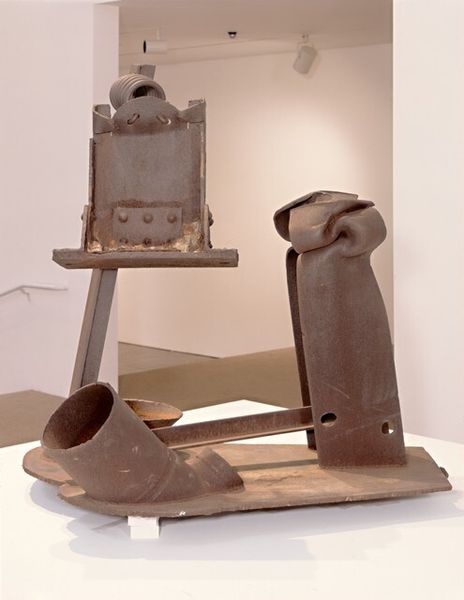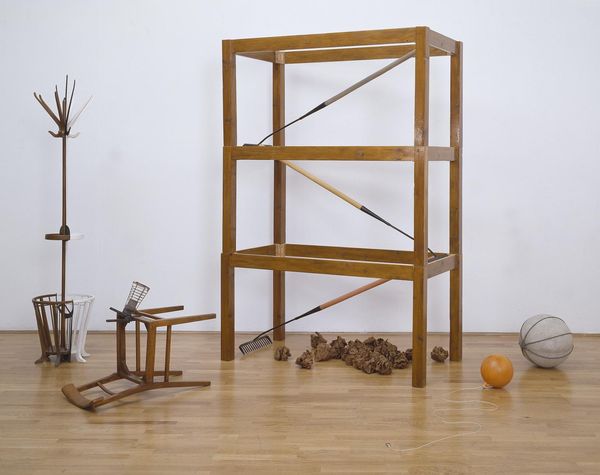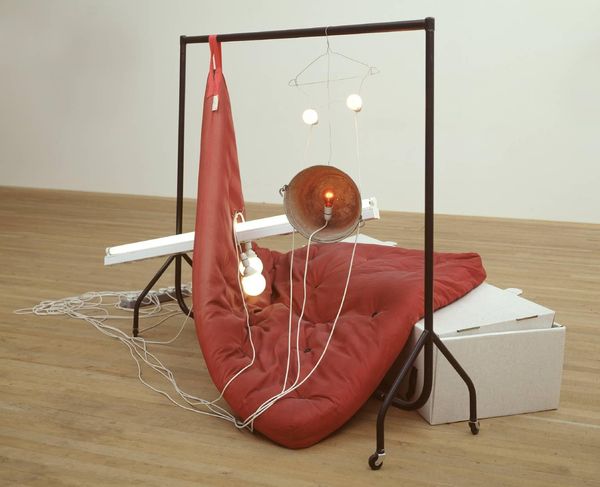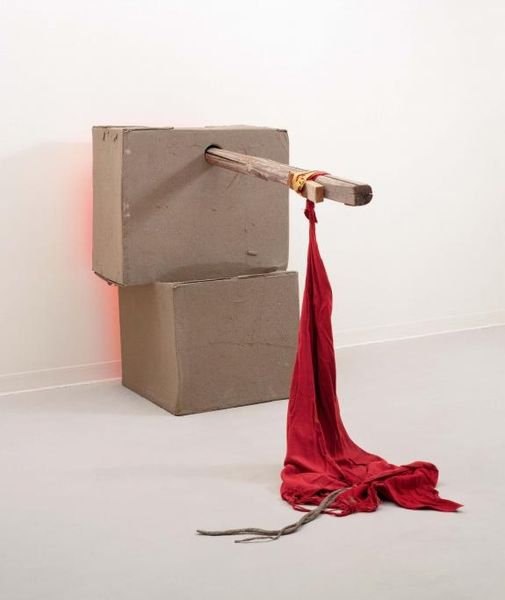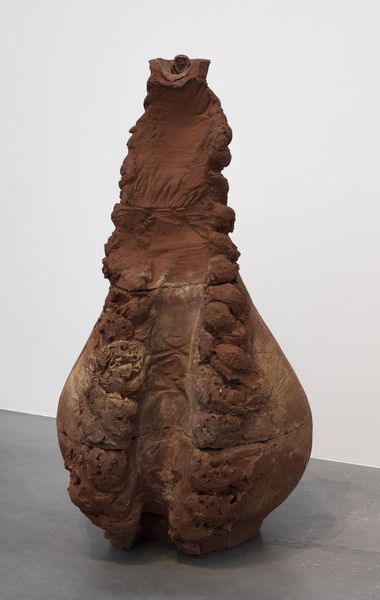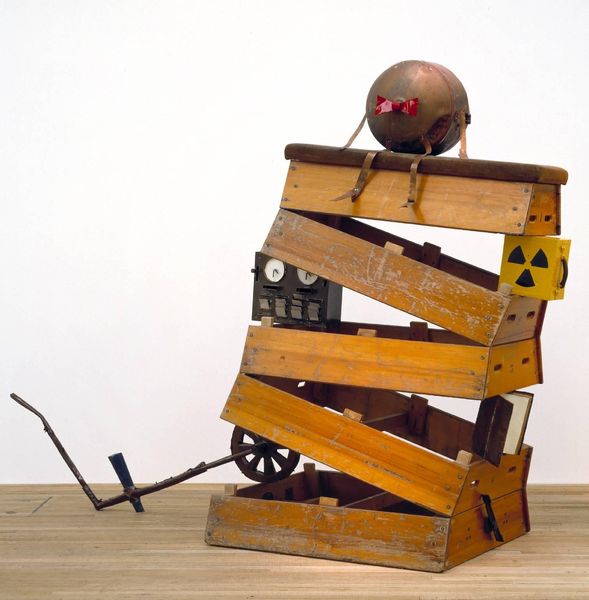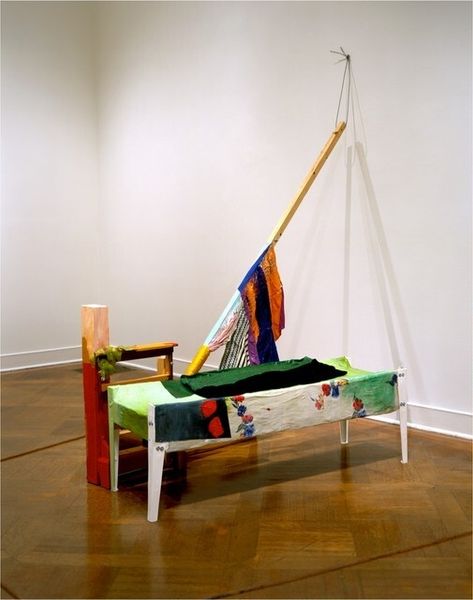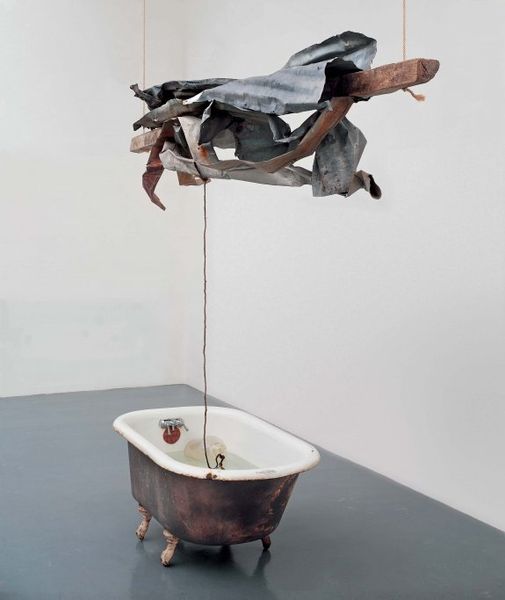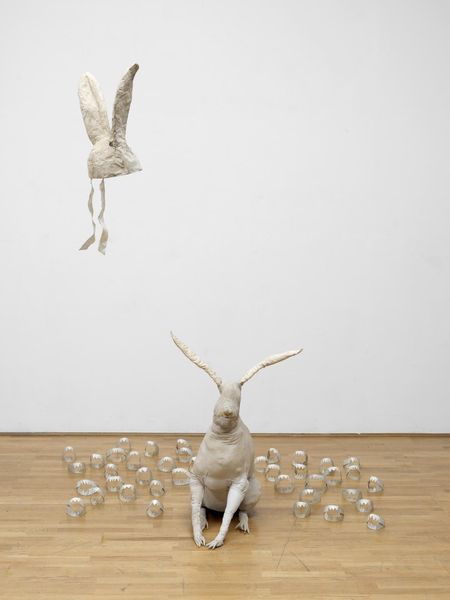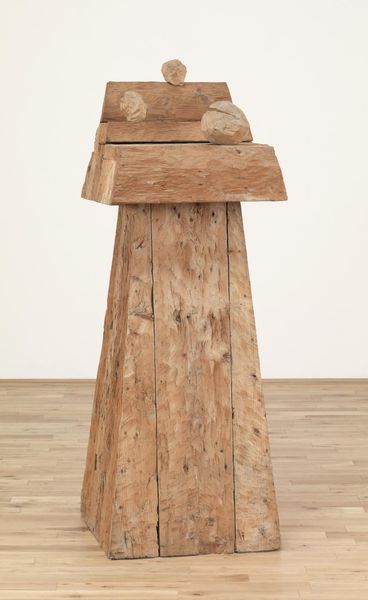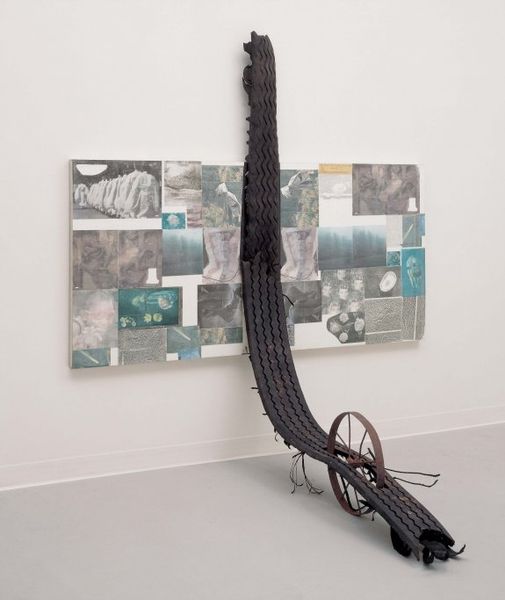
Dimensions: object: 1700 x 1450 x 1450 mm
Copyright: © The estate of Barry Flanagan, courtesy Plubronze Ltd | CC-BY-NC-ND 4.0 DEED, Photo: Tate
Curator: This intriguing piece is by Barry Flanagan, titled aaing j gni aa. Its date is unspecified, but Flanagan, born in 1941, passed away in 2009. Currently residing in the Tate Collections, it presents an unusual assemblage of materials. Editor: It strikes me immediately as surreal, almost playful in its odd juxtapositions of forms. The textures also play a big role in the overall impact. Curator: Absolutely. Consider Flanagan's process, his deliberate use of, what appears to be, everyday fabrics and stuffing. It challenges traditional sculptural materials. Editor: Indeed, that interplay between soft and rigid forms certainly creates a visual tension. I'm also intrigued by the composition—the way these disparate objects seem to be interacting within their defined space. Curator: Exactly, by manipulating readily available materials, Flanagan democratizes the artistic process, inviting viewers to reconsider the value we place on materials and labor. Editor: I hadn't considered the social commentary, but now I see how the materials themselves become signifiers of the everyday. Curator: Precisely. By examining Flanagan's choices, we gain insight into not just the piece itself, but also the artistic and social context it emerges from. Editor: Yes, there's a definite sense of materiality becoming message here. It's altered my perception entirely. Curator: And that's the power of Flanagan's work. Editor: Quite so. Thank you.
Comments
tate 7 months ago
⋮
http://www.tate.org.uk/art/artworks/flanagan-aaing-j-gni-aa-t01120
Join the conversation
Join millions of artists and users on Artera today and experience the ultimate creative platform.
tate 7 months ago
⋮
To produce these bulging forms, Barry Flanagan filled pre-stitched cloth with soft, mouldable materials such as sand and wet plaster. He explained, ‘I liked the idea that the shapes virtually made themselves’. His work in the 1960s was highly innovative, notably in his choice of materials. The title is a palindrome – it reads the same forwards and backwards. It does not have a clear meaning, reflecting Flanagan’s interest in the experimental possibilities for sculpture. Gallery label, January 2025
